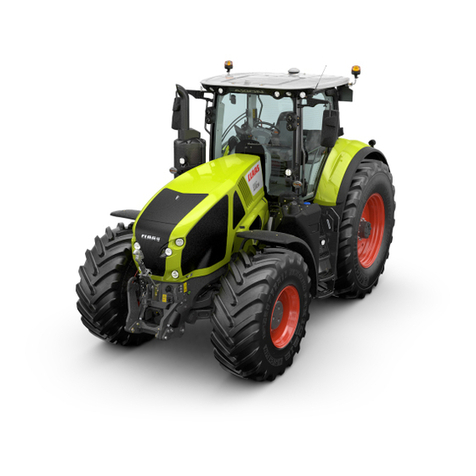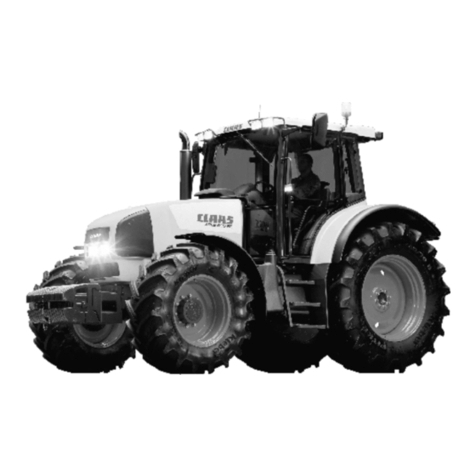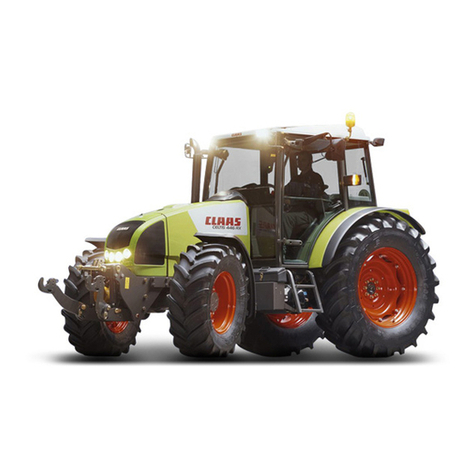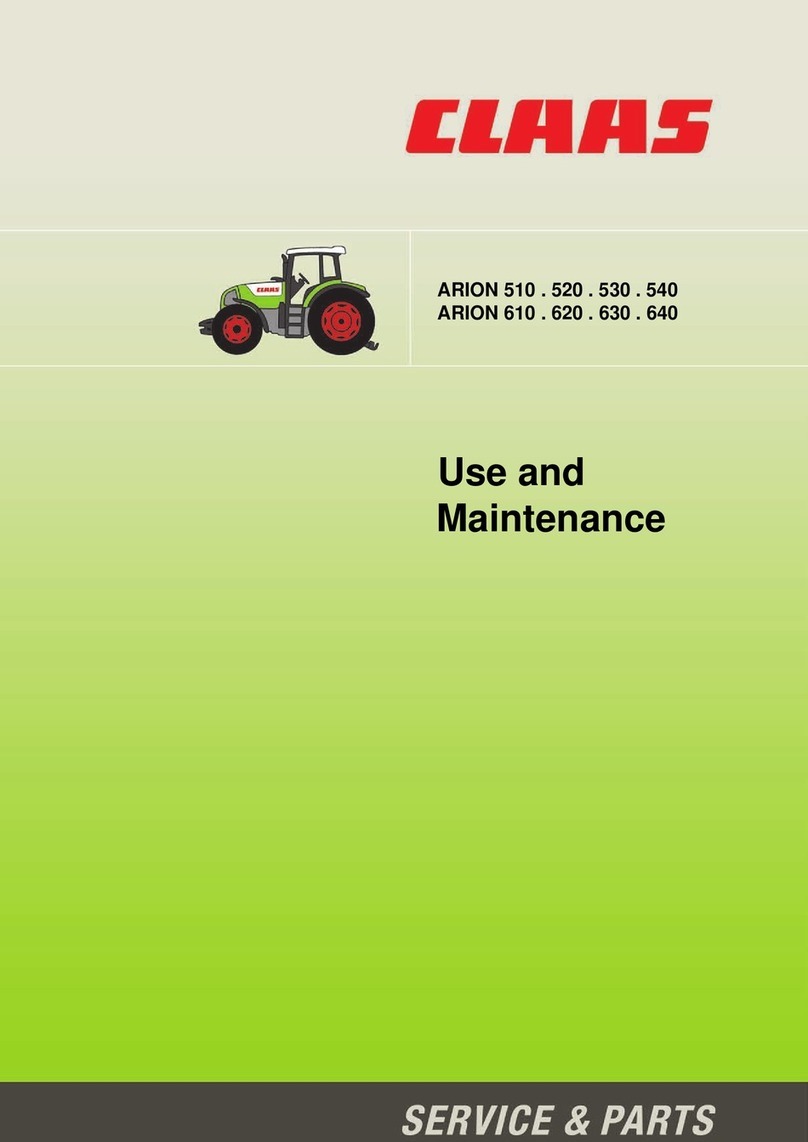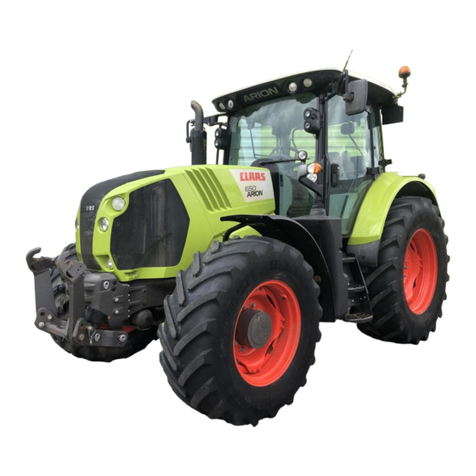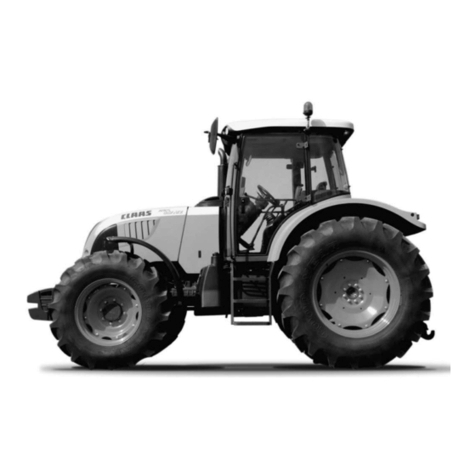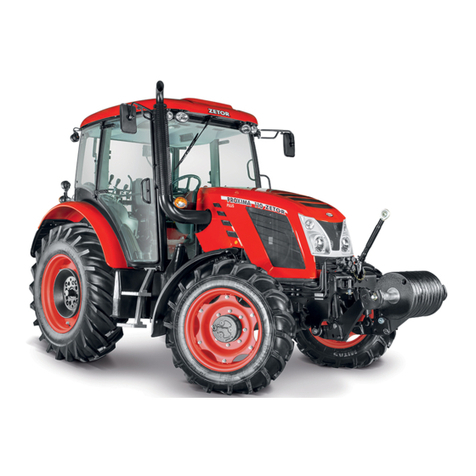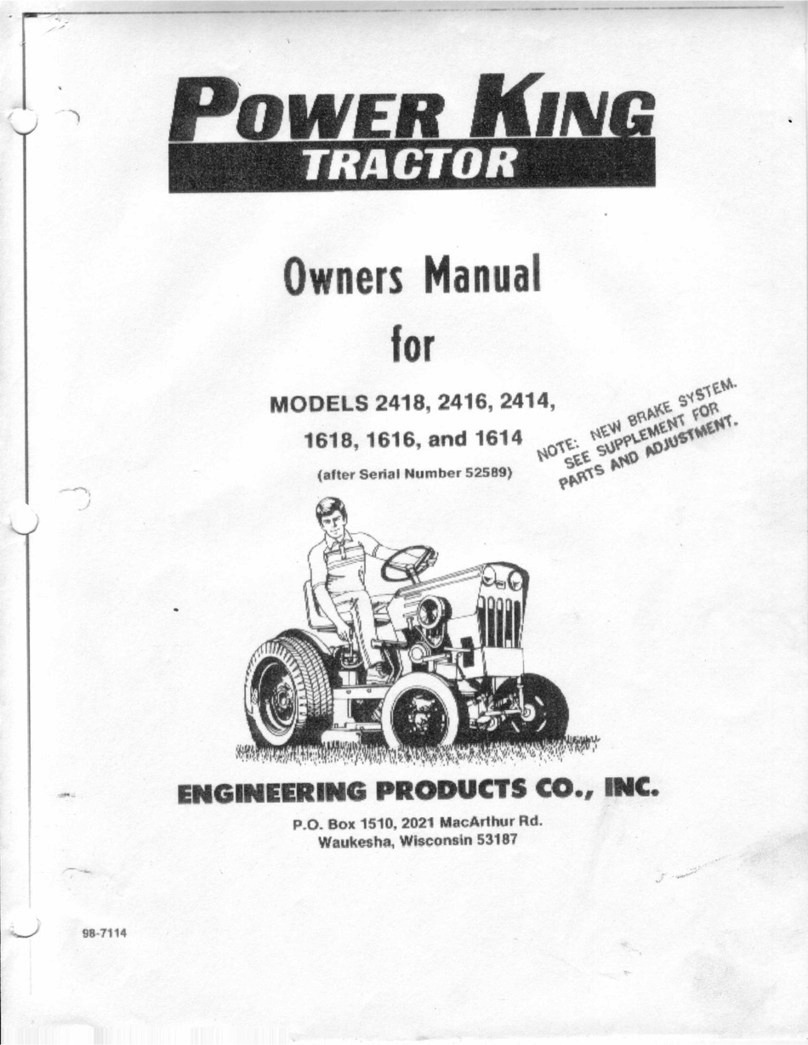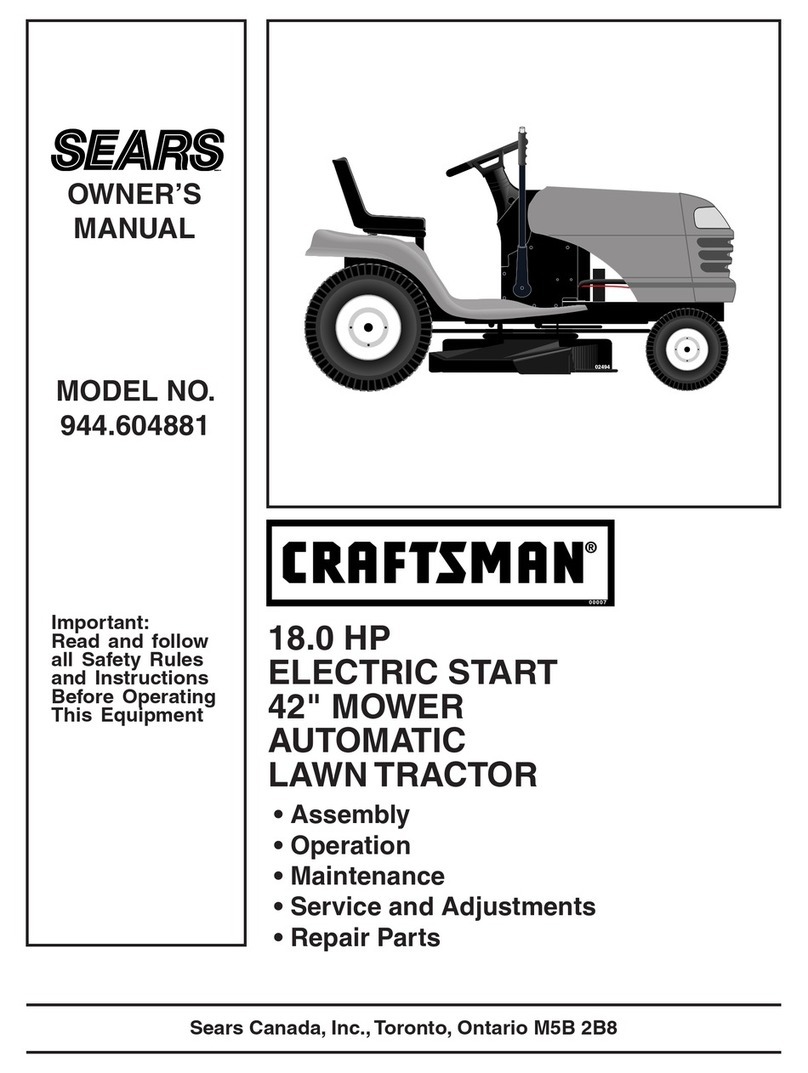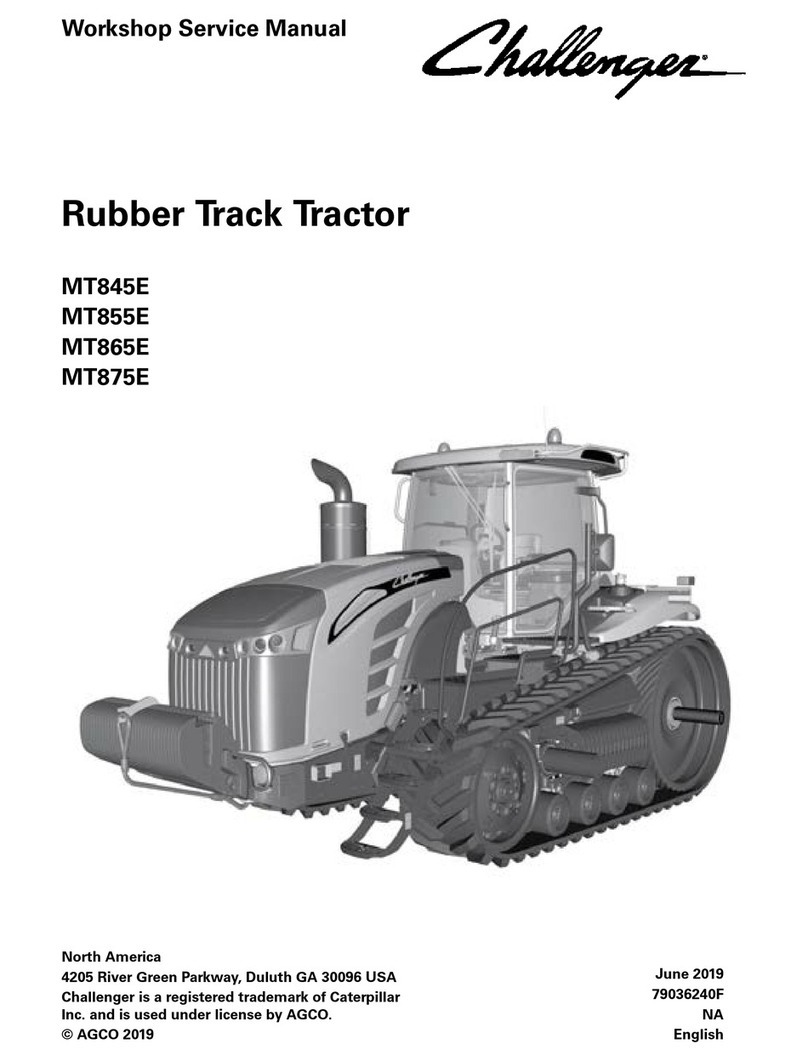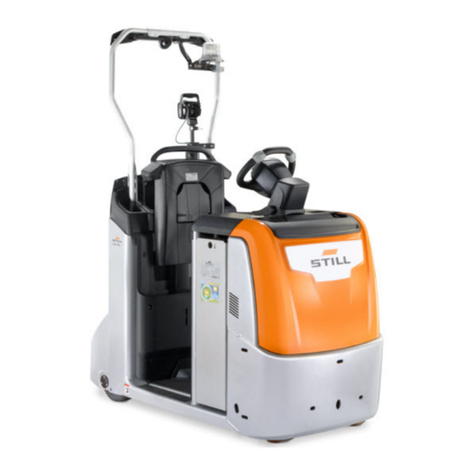Claas JAGUAR Series Installation guide

JAGUAR 830 - 880 (500)
Information and Basic Field Settings

Introduction
Safety
Drive Concept
Right Hand Switch Panel
Multifunction Lever
CEBIS
Road Travel Display
Harvest Display
Keys and Symbols
HOTKEY
Feed Rollers
Metal Detector and Stop Rock
Opening Feed Rollers
Chopping Cylinder
Sharpening
Cylinder Concave
Shear Bar
Corn Cracker
Removing the Corn Cracker
Accelerator
Discharge
Other Machine Features
Front Attachment
PICK UP
DIRECT DISC
ORBIS
Pitching and Dampening
Silage Quality - Adjustments
Useful Part Numbers
03
04
05-06
07
08
09
10
11
11
13-14
16
17-19
20
23
24
25
26-27
28
29
30
31-33
35-38
39-40
41-45
47
49-50
53
Contents

03 04
Introduction
This quick reference guide has
been produced to aid operator’s with
familiarisation and settings of CLAAS JAGUAR
forage harvesters.
CLAAS forage harvesters are designed for output
and efciency but this can only be achieved
with correct operation and maintenance of the
machine.
This guide is not designed to replace
the Operator’s Manual but purely as
a reference document.
More in depth information is available
in the Operators Manual.
Downtime costs output
To get the most from the machine, the wheels must be turning.
In order to keep downtime to a minimum, it’s vital that routine
maintenance is not neglected.
As well as servicing the machine according to the operator’s
manual, a good check of the machine is essential. It is false
economy to put off the replacement of worn parts until they
break.
Abbreviations
Throughout this guide the following abbreviations are used:
‘LHS’ and ‘RHS’ refer to the Left Hand Side and Right Hand
Side of the machine respectively, taken from the rear of the
machine facing in the direction of travel.
• Make sure you are familiar with the controls and operation
of the machine and have read the Operator’s Manual.
• The forage harvester has many moving parts, guards are
designed to keep you safe, please ensure that all guards are
kept in place and in good condition when operating
the machine.
• When doing any maintenance work or making
adjustments outside of the machine make sure that the
engine is switched off and the battery isolator key is
removed.
• Some of the maintenance has to be carried out at height,
please asses the risks that this poses and ensure that the
task is carried out safely.
• When operating the machine be aware of the presence
of people particularly in farmyards, always get someone to
help you when reversing in conned areas.
• Be aware of the size of your machine, particularly the
height, you may be at risk from contact with overhead
power lines and overhead obstructions particularly but not
exclusively when the spout is in the working position and if
extra aerials have been tted to your machine.
ALWAYS READ THE OPERATORS MANUAL BEFORE
OPERATING YOUR FORAGE HARVESTER.
The information is therefore not complete for the purpose of
working on the machine. This document does not replace the
relevant operators manual and repair documentation! Subject to
changes due to continued technical developments.
Safety is of the utmost
importance whilst you are
operating and maintaining
your forage harvester.
Make sure that all of the
risks are assessed to
reduce the likelihood of
an accident.
For more in depth safety
information please consult
your operators manual.
Always read the Operator’s
Manual before using any new
machine.
Safety

05
Drive Concept
Drive is taken directly from
the diesel engine (1)
via a power band belt (2)
to the cutting cylinder (3),
and the accelerator (4).
The accelerator shaft drives
the corn cracker (5) by means of
another belt drive.
The cutting cylinder shaft
transmits the power to the right side
via the third power band belt (6),
driving the front attachment drive (7)
and the feed rollers.
The feed rollers are reversed
using the hydraulic motor (8).
1
2
3
4
5
6
7
8
Right Hand Console
1. Info Key
Provides extra information
2. Hot Key
Additional machine functions
3.CEBIS Rotary Switch
Main Menu functions
4. Back Key
Back step / cancels a change
5. Radio Functions Keys
Operates radio and bluetooth
5
1
2
3
4

Right Hand Switch Panel
1. Main Drive Switch
Engages the chopping cylinder
2. Partial Widths Adjustment
3. Steering Centralisation Adjustment
4. Header Height Adjustment
5. Cruise Piolet Speed Adjustment
6. AUTO FILL ll height adjustment
7. Discharge chute raise/lower
8. Front attachment
9. Additive system switch
10. 4 Trac on/off switch
11. Gear selection switches
1
23
56
7
8
9
10
4
11
Multi-Function Lever
1. Lower Front Attachment
2. Raise Front Attachment
3. AUTOCONTOUR On/Off
4. Cutting Height Pre-Selection
5. AUTOPILOT On/Off
6. Spout Control In/Out and Chute L/R
7. Front Attachment / Feed Roller Reverse
8. HOTKEY Operation
08
9. Front Attachment / Feed Roller
Disengagement
10. Auto Chute Positioning
11.. Auto Chute/Auto Fill parking position/
engagement
3
5
6
7
8
9
10
4
1
211

10
CEBIS Harvest Display
1. Main Menu
2. Fuel Level
3. Urea Level
4. Coolant Temperature Level
5. Gear / 4WD Status
6. Forward Speed
7. User Dened Displays
CEBIS Road Travel Display
09
1. Main Menu
2. AUTOCONTOUR Height Control
3. Pre-Set Cutting Height
4. Message Fields
5. Gear Selection
6. Engine Speed
7. Ground Speed
8. Engine Load
9. Performance Monitor
10. Camera Selection
11. Machine Setting and Adjustments
12. User Dened Displays
* Pre-set as a standard, may be modied.
5
2
3
4
6
1
1
12
3
2
10
11
78
9
6
54
7

HOTKEY
11
The HOTKEY is used to adjust the most
frequently changed settings on the
machine.
To adjust any of the hot key functions
activate the hot key button (1) on the arm
rest or CMOTION drive stick and select the
required function for change.
The HOTKEY menu (2) will be displayed
for 5 seconds when activated and when
the desired menu is slecteced it will be
displayed in box (3). Functions in box
(3) can then be quickly adjusted via the
CMOTION lever.
1
1
3
2

14
13
Feed Rollers
The purpose of the feed rollers is to compress the crop before it enters the chopping cylinder.
The feed roller speed is adjusted using the manual gearbox to achieve the required chop length.
Bottom Plate
When harvesting whole crop or maize,
the grain collection plate (1) needs to be
tted underneath the feed rollers to stop
any grains from falling out under the machine.
This needs to be removed for grass harvesting.
Plastic Strips
It is advisable to remove the Teon strips
off the upper feed roller during maize harvest.
This will allow optimal feeding of the crop to
the cutting cylinder.
Cylinder
V-Classic 28
Number of knives 28
4.0, 5.5, 7.5, 10.0, 13.0, 15.5
24
4.5, 6.5, 9.0, 12.0, 15.0, 18.0
20
6.0, 8.0, 11.0, 15.0, 18.0, 22.0
Number of knives
Number of knives
Length of cut range (mm)
Length of cut range (mm)
Length of cut range (mm)
V-Classic 24
V-Classic 20
Application Complete set of knives

16
Metal Detector and Stop Rock
A metal detector is installed in the bottom
roller of the feeder unit.
When a sudden instance of magnetic
metal is fed into the feeder unit, the feeder
unit stops before the metal can enter the
chopping cylinder.
The sensitivity can be adjusted in the cab
using CEBIS.
Sensitivity Adjustment: 1 > 5
It is not possible to switch off the metal
detector. The sensitivity can be adjusted from the
cab using CEBIS.
Sensitivity Adjustment: 0 > 10
It is recommended to deactivate
Stop Rock when harvesting maize,
using sensitivity setting 0.
Stop Rock, is used to detect stones
entering the feed rollers by monitoring the
movement of the upper precompression
rollers.
A sudden movement of the feed rollers
indicates a foreign object, the machine will
then stop the feed rollers similar to a
metal detection.
When the metal detector
DIRECTSTOP function is activated
in CEBIS, the machine’s forward
motion will stop automatically if the
metal detector or stone detector
detects a foreign object.
This function can be activated and
deactivated through CEBIS as is
required.

17 18
Opening Feed Rollers
1. Lower the legs on the front attachment and lower
the feeder housing as far as possible.
2. Undo the 13mm bolt and retaining collar to remove the
panel over the drive belt on the RHS of the feeder.
3. Remove the guard over the drive belt on the RHS of the
feeder housing and remove front attachment belt.
4. Undo the 24mm locking bolt underneath the feeder
housing until the hooks become free.
5. Remove the electrical, lubrication and air connections
on the machine RHS and the hydraulic motor
connections on the LHS.
6. Slacken the bolt and swing out the locking unit on
both sides. The Jaguar can now be reversed, leaving
the feeder housing attached to the front attachment.
Make sure the cutting cylinder is not lifted from the cab,
while the feeder housing is removed.
In order to remove the feed rollers, the front
attachment must remain on the front of the feed
rollers and the following steps need to be followed:
123
456

Opening Feed Rollers
19
The feeder housing can also be V’d open as shown to
give a brief inspection of the blades. In order to V open
the feeder housing, the following steps must be followed:
1. The front attachment must remain on the feeder housing.
2. The feeder housing must rst be lowered to the lowest
possible position.
3. The locks, electrical connections and hydraulic connections
can then be removed.
4. It is important not to unlatch hooks underneath
feeder housing.
5. The engine can now be started and lift the front attachment
with caution to any hoses or cables.
6. It should now be possible to gain access as can be
seen above.
Chopping Cylinder
20
The chopping unit has the task of cutting the material
compressed by the feeder housing to the pre-set chopping
length and of accelerating this material out of the
cutting plane.
There are 3 cylinder variants available:
•V20 (20 Knives)
•V24 (24 Knives)
•V28 (28 Knives)
Changing the Knives
When the shear bar can not be adjusted any further, CEBIS
will indicate wear on knife edge. As the knives are xed
using elongated holes, the position of the knife can be
readjusted to the shear bar.
Please refer to the operators manual (section 9.12.13) for
full instructions on replacing the knives.
When working on the cutting cylinder, ensure the machine
is stopped and the cylinder locking tool is in place.


Sharpening Cylinder Concave
23 24
The sharpening process is carried out
from within the cab. This is completed
with the main drive engaged at idle
engine RPM. The procedure and the
number of cycles can be adjusted
from CEBIS.
There are two types of concaves available for under
the cylinder. The smooth version tted as standard
for normal conditions or the heavy duty premium line
version for use in conditions where wear from sandy soil
etc is a problem.
Concave Adjustment
Once the blades wear on the machine,
the bottom ‘concave’ may need to be adjusted to
achieve optimum crop ow, this can be done by
removing the shims tted as required.
Refer to section 9.12.3 in the operators manual for
instructions on how to carry out adjustment.
The sharpening stone readjusts
automatically during the sharpening
process, however after approx. 450
cycles this needs to be manually reset.
Please refer to section 9.12.15 of the
operators manual to carry out this
adjustment.
Number of cycles
The number of cycles can be
adjusted through CEBIS, as few as
possible to obtain a good cutting
edge but as many as needed to
maintain the edge. It is best to
sharpen frequent with less cycles as
opposed to daily with many cycles.
Sharpening Interval
The sharpening interval should be
adjusted dependant on the degree
of wear on the knives. This must be
checked visually, as the degree of
wear will vary dependant on:
• Throughput Volume
• Crop Type
• Sand proportion (stubble height, raking depth)
• Chop Length

Shear Bar Corn Cracker
25 26
Shear Bar Adjustment
The shear bar can be adjusted automatically from
the comfort of the cab using CEBIS. The shear bar should
be readjusted after each sharpening and where possible
between sharpening intervals.
The crop coming from the chopper unit is crushed between
the Corn Cracker rollers and conveyed to the accelerator.
The purpose of the cracker is to open each kernel of maize in
order to free its starch to allow its starch to be free for digestion.
When the Corn Cracker is not in use, it should be completely
removed from the machine because at stand still the high
performance bearings might be damaged by the vibrations
in the machine.
Multi Crop Cracker Variants (MCC)
Please refer to the operators manual Section 9.12.9, for
full instructions.
Recommendations:
The condition and the adjustment of the shear bar are essential
to obtain optimum chopping quality, maximum efciency and long
service lives of knives and shear bar.
1. Readjust the shear bar after every sharpening process.
2. If needed, the shear bar should be readjusted without knife
sharpening, ie. if clearance too great.
3. Adjust the shear bar as close as possible to the knives, for
optimum chop quality. The knives must not touch the shear bar,
otherwise wear increases. A feeler gauge can be used to monitor
the gap.
4. To assess the wear condition of the shear bar, the rear side
must be inspected. (The rear of the shear bar must be able to sit
straight on the knife).
> The cutting edges of PREMIUM LINE shear bars have a longer
service life and therefore improve chopping quality and
service life.
Shear Bar Adjustment
When the shear bar is worn or cannot be readjusted any further,
it must be turned around or replaced.
Type Machine
MCC - M - 80/100 teeth
JAGUAR
830-870 6 - groove
JAGUAR
870-880 7 - groove
MCC “L” 125/125 teeth
MCC - M - 125/125 teeth (whole crop)
MCC MAX 120/130
MCC - M - 100/100 teeth
MCC “L” 150/150 teeth
MCC “L” 100/125 teeth
Shredlage 110/145
Power Band Belt

Corn Cracker
27 28
100%
150%
150%
V-28 V-24 V-20
Halbmesser
Half knives
V-24 / V-28
3,5-15 mm 4-17 mm 5-21 mm 8-28 mm / 7-30 mm
3
,
5
4
5
6
7
8
9
1
0
1
1
1
2
1
3
1
4
1
5
1
6
1
7
1
8
1
9
2
0
2
1
2
2
2
3
2
4
2
5
2
6
2
7
2
8
2
9
3
0
MULTI CROP CRACKER
m
m
m
m
JAGUAR 800
K
U
R
Z
S
C
H
N
I
T
T
S
H
O
R
T
C
U
T
L
A
N
G
S
C
H
N
I
T
T
S
H
R
E
D
L
A
G
E
®
L
O
N
G
C
U
T
Aufbereitungsintensität
Processing intensity
MCC MAX
MCC SHREDLAGE®
MCC CLASSIC
M
C
C
M
A
X
M
C
C
S
H
R
E
D
L
A
G
E
®
M
C
C
C
L
A
S
S
I
C
1
0
0
/
1
2
5
M
C
C
C
L
A
S
S
I
C
1
2
5
/
1
2
5
1
2
3
1. MCC L Roller
2. MCC Shredlage Roller
3. MCC L Max Roller
Removing the Corn Cracker
In crops where the corn cracker is not needed, it is recommended that the corn cracker is completely removed from the
machine. During this time, the ller housing needs to be tted to replace the dismounted corn cracker, this allows the
crop ow directly from the cylinder to the accelerator.
For this conversion, the drive belt of the Corn Cracker is removed (R15), the lock is released as shown in picture 3 (loosen
bolts [1] and rotate locks [2]) and the Corn Cracker can then be retracted, using the ratchet wheel [3]. After this, the ller
housing is put into place and fastened by tightening the locking tabs.
For full information regarding the removal of the Corn Cracker please refer to Section 7.20.11 of the Operators manual.
1 2 3 4

29 30
Accelerator Discharge
The discharge accelerator receives the crop from the Corn Cracker or directly from
the chopper unit and conveys it through the square discharge tube and the upper
discharge chute out of the machine at high velocity. The crop is expelled
via the discharge
chute into the trailer,
the chute can be
moved to maximise
trailer lling using the
buttons on the joystick
as shown earlier in
the booklet.
Different length chutes
Different length chute extensions need to be added or removed according to the width of
header which is attached to the front of the machine. Chute extensions come in 750mm
lengths and the L chute has 2 sections added.
Mechanical Adjustment
On the standard machine the gap between the housing and the accelerator can
be adjusted manually both LHS and RHS.
Why change the clearance in the accelerator?
If the maximum blow is not needed, the accelerator position can be set to a wider
opening this reduces wear and fuel consumption. Setting the accelerator closer to
the plate will increase the blowing capability.
Accelerator Paddles
There are toothed accelerator paddles tted as standard. Smooth paddles can be
tted if needed to increase the blowing capacity of the machine, e.g in very dry crops.
If changing the paddles, it is important to note the difference in height of the paddles,
so it is important to adjust the accelerator clearance afterwards.
Please Refer to the operators manual Section 9.13.20 for full procedure.

33 32
Other Machine Features
The JAGUAR can also be tted with the
OPTI FILL automated discharge chute control system.
This feature delivers the following functions:
• Extended swivel action, segmented in intervals
of approximately 70cm
• Automatic ap adjustment to ensure trailers lled
at the centre point as chute swivels
• Extended chute angle to 225° (standard 210°)
• Automatic return of chute to road travel position
• Automatic swivelling from one side to the other
AUTO FILL (Optional)
AUTO FILL is an option which
allows fully automatic control of
the discharge spout. This consists
of an additional camera on the
spout which monitors the trailer
position and ll level.
There is also an additional
monitor tted in the cab to allow
the operator to view the trailer
and spout position.
The AUTO FILL system can be
activated by pressing switch
pictured on the joystick.
Customer Benets
• Optimised operation when lling trailers.
• Ease of Operation to park/rotate chute.
• Convenient to use.

Other Machine Features
Additive Application
The JAGUAR is tted with an additive tank as standard. This can
carry up to 375 litres of liquid.The system can be activated from
the cab.
The ensiling agent system is activated under the following
conditions:
1. The JAGUAR must be travelling forwards.
2. The chopping unit and the attachment must both be engaged.
3. The attachment must be in the working position.
Dosing Options
• Constant dosing mode – 20 > 400 L/hour
• Throughput dependant dosing – 500 >2000 ml/tonne
(up to 200tonne/hour throughput)
ACTISILER (Optional)
The independent ACTISILER system is available for adding lactic
acid bacteria. A 37L storage container supplies the dosing pump.
As 23L fresh water tank is also tted for ushing which can be
activated from the cab.
Dosing Options
• Constant dosing mode – 200ml > 20,000 ml/hour
• Throughput dependant dosing – 10ml > 50 ml/ tonne
Flushing of the lines is possible from the cab.

CONTOUR
ACTIVE CONTOUR
Mechanischer Ausgleich der PICK UPRegelimpulsAuflagendrucksteuerung
35
PICK UP
36
PICK UP
ACTIVE CONTOUR is activated when
auto contour function is enabled and
the cutting height control is above
0%. When the cutting height control
is below 0%, ground pressure mode
is activated and ACTIVE CONTOUR is
deactivated. Note that damage can be
cause by excess ground so ACTIVE
CONTOUR is the preferred method
of operation.
A 32 and 17 tooth sprocket are tted on the feed auger
drive from the factory - this is recommended for medium to
long chop lengths.
Two further sprockets are included in the shipping package
for adjusting the auger speed. These are 33 and 15
toothed sprockets for short chop lengths.
Auger speeds can further be adjusted by means of the 3
speed gearbox.
On the pick-up 300, the entire drive is from the mechanical
drive from the JAGUAR via quick coupler (1). From there,
the pick-up drive (2) and the feed auger (3) are driven.
Using the 3-speed gearbox (3) there is a shift lever which
enables the feed auger speed to be switched between
three gears.
A centre sensing wheel (4) further improves ground
adaptation especially on soft and very uneven ground.
1
2
3
4

37
PICK UP
38
PICKUP
Maintenance checks by operational hours.
Check tightness of all gearboxes
Check all oils
Check drive shaft, chains and clutches
Check all connections
•
•
•
•
•
•
•
•
•
•
•
•
•
•
•
•
Check all connections
Check tightness of gearboxes
Ensure all connections are tight
and secured correctly
Prior to harvest
Daily
Check all gearbox oils
Lubricate all grease points
Check chain tension on intake auger
Check pick up chain tension
Change all gearbox oils
Check clutches
Check all chain tensions
Check all connections
Check all connections are tight
and correctly seated
50 hours
500 hours
General Adjustments
• Ensure the height of the sensing wheels is correct
• Adjust the speed of the feed auger via the 2 stage
gearbox or different sprockets
• Check chain tensions regularly
• Ensure overrun clutches operate correctly
• Check bearings for play regularly
• Check tines and tine bars at the beginning
of the working day
• Check type pressures on sensing wheels regularly
This manual suits for next models
4
Table of contents
Other Claas Tractor manuals
Popular Tractor manuals by other brands
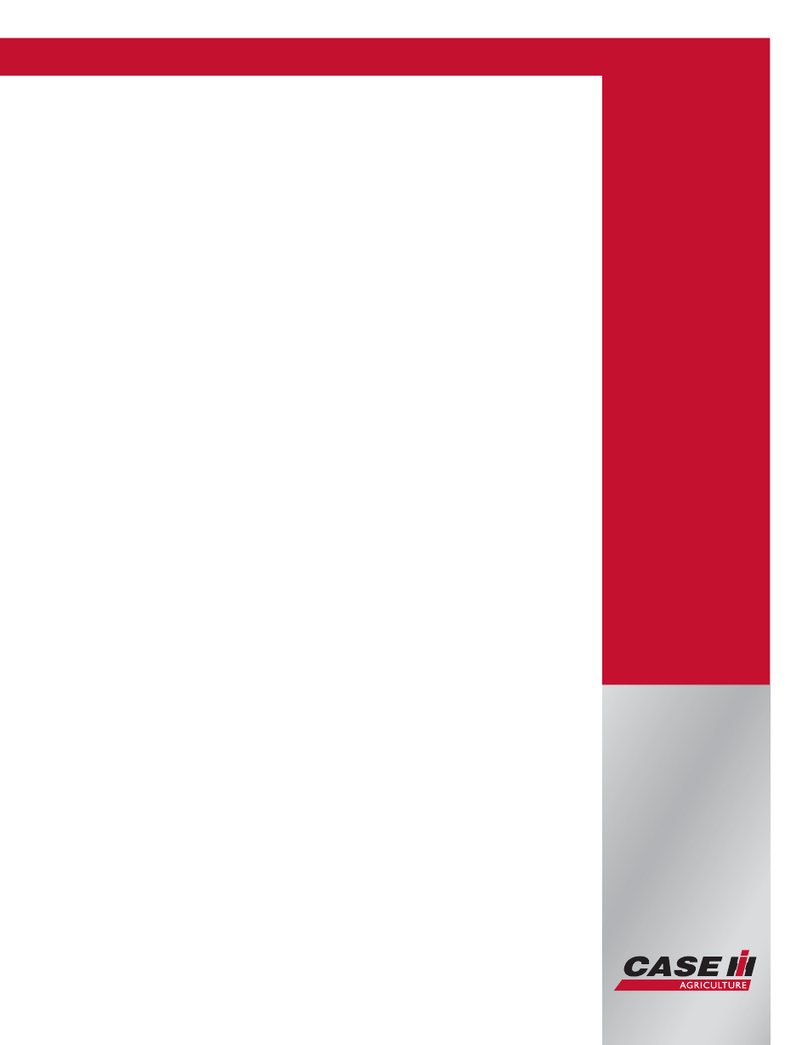
Case IH
Case IH FARMALL 75C Service manual
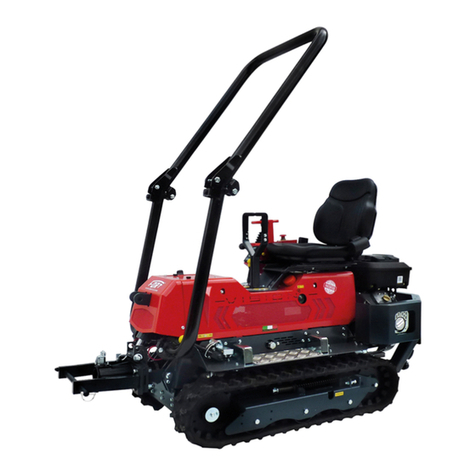
Fort
Fort VISION USE AND MAINTENANCE MANUAL AND ASSEMBLY INSTRUCTIONS
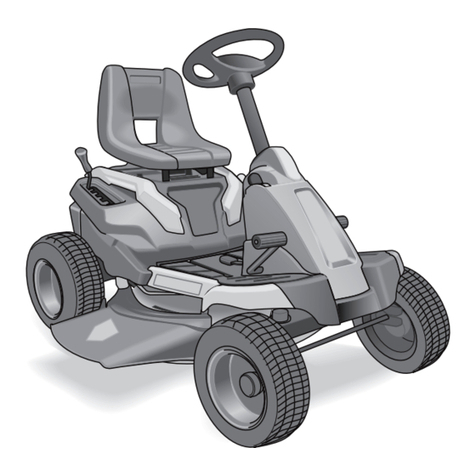
MTD
MTD Cub Cadet H20 Original operating instructions
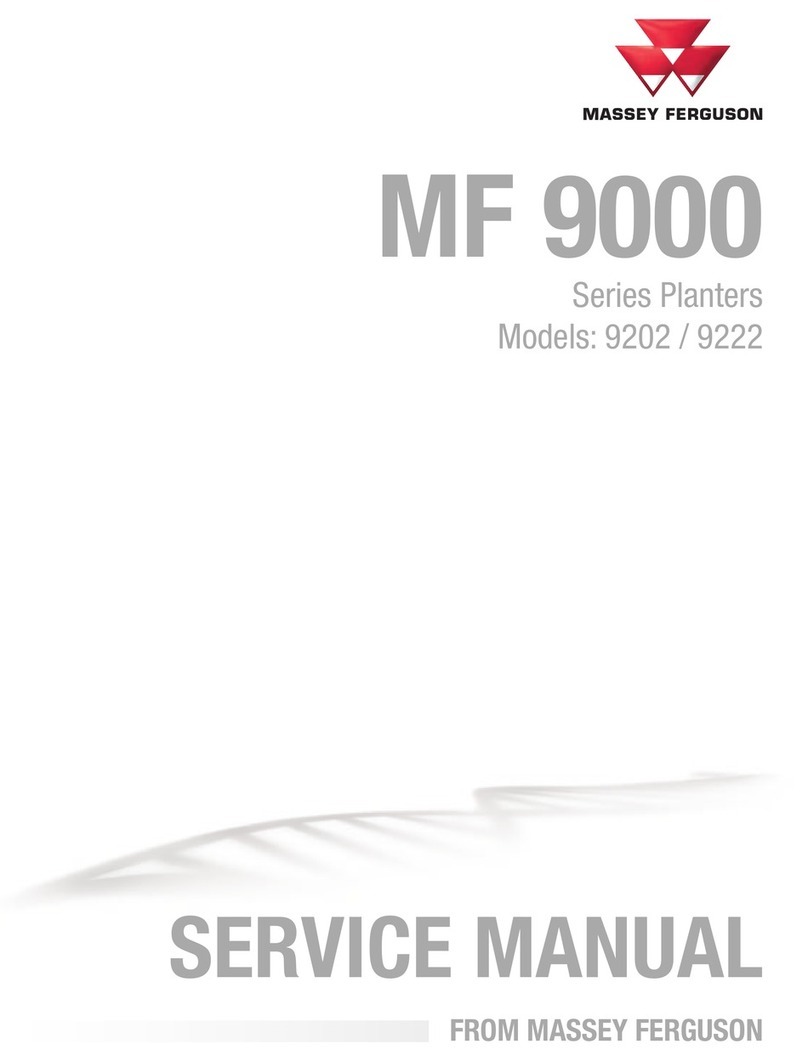
MASSEY FERGUSON
MASSEY FERGUSON MF 9000 Service manual
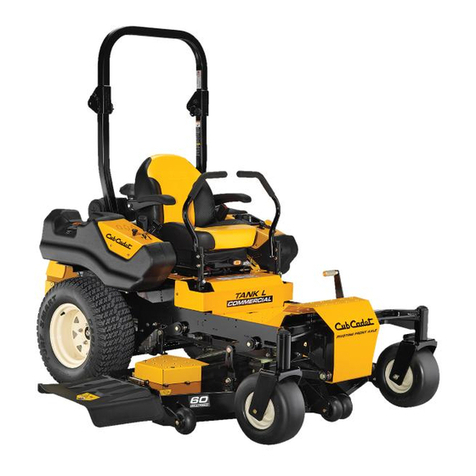
Cub Cadet
Cub Cadet TANK L 48 Operator's manual
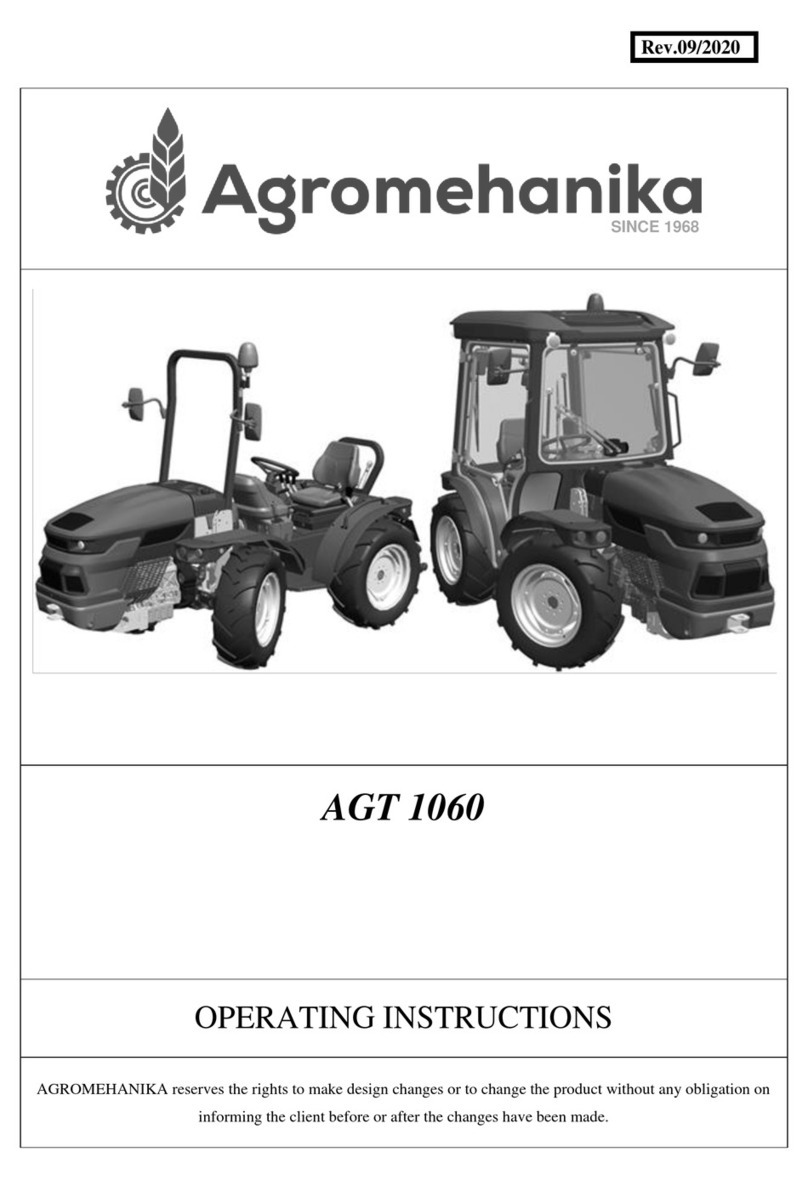
Agromehanika
Agromehanika AGT 106 operating instructions
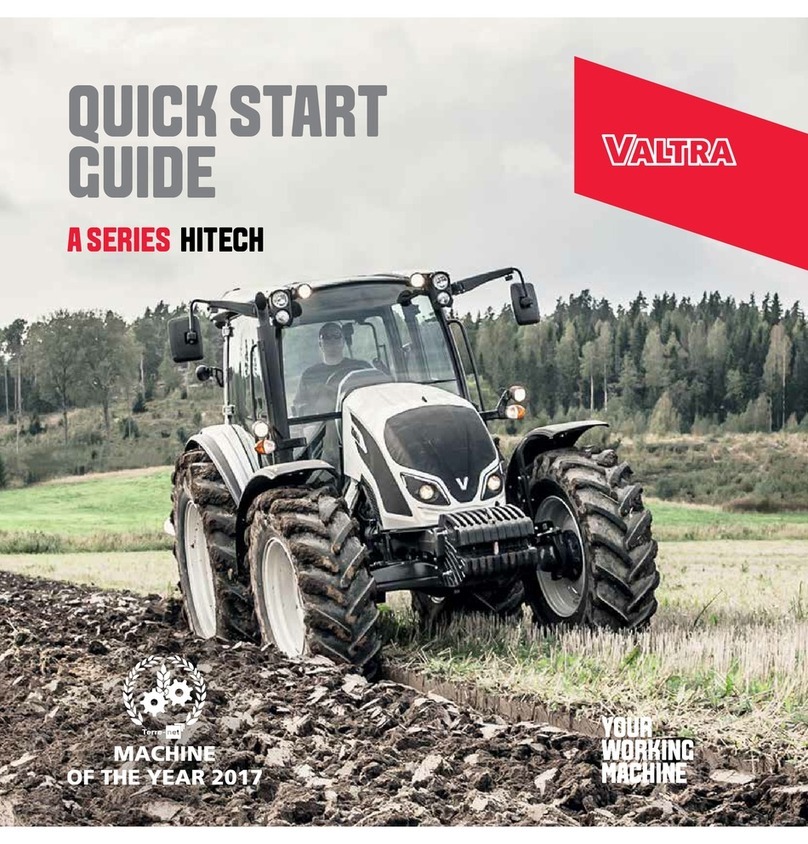
Hitech
Hitech VALTRA A74 quick start guide
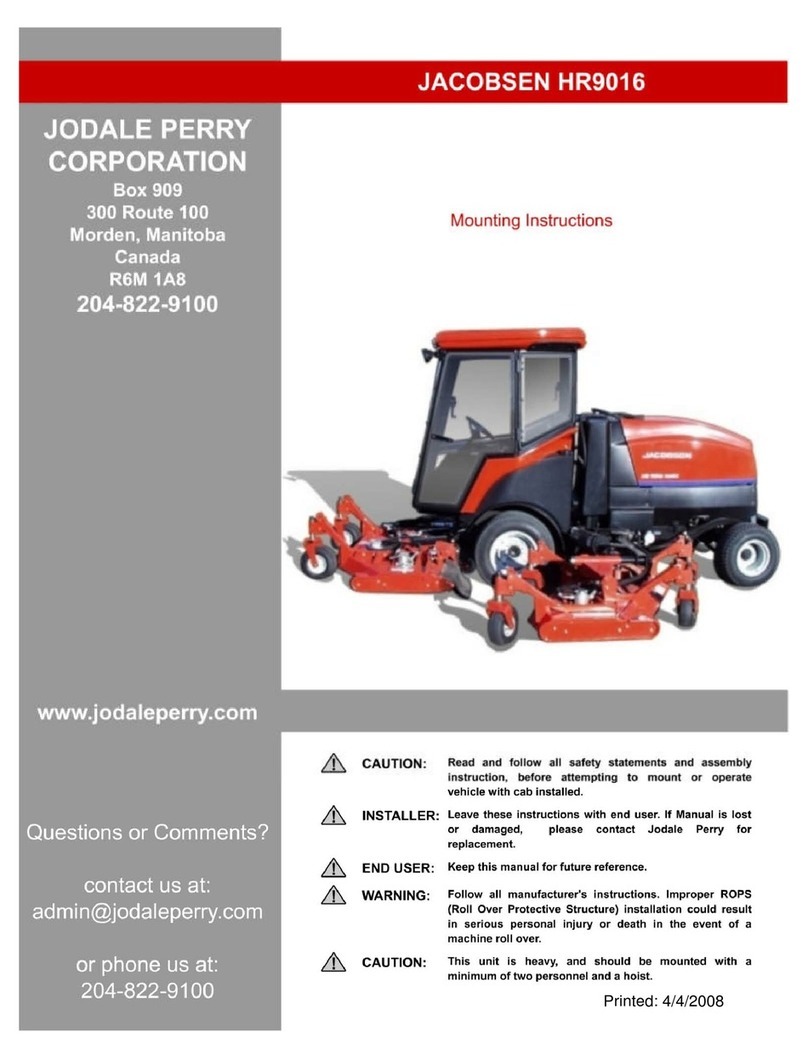
Jodale Perry Corporation
Jodale Perry Corporation Jacobsen HR9016 Mounting instructions
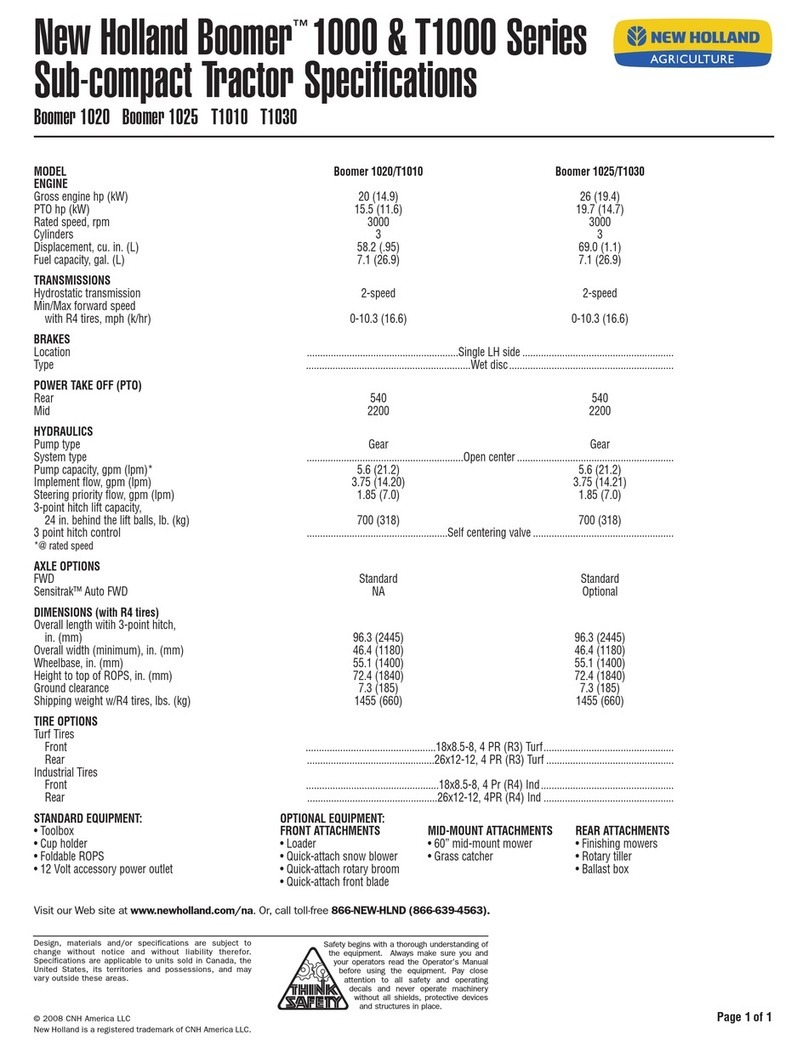
New Holland
New Holland Boomer 1020/T1010 Specifications

Bolens
Bolens Husky 1476 Operator's manual

Husqvarna
Husqvarna TS 138 Operator's manual
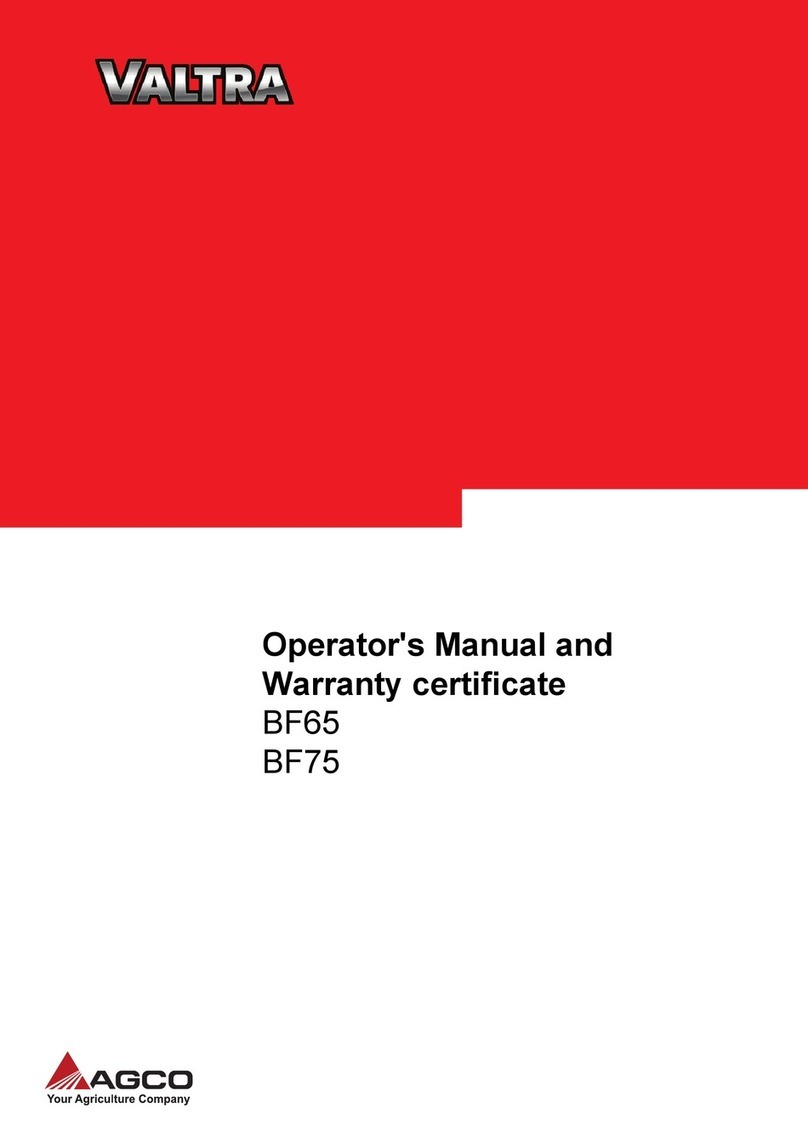
AGCO
AGCO VALTRA BF65 Operator's manual

